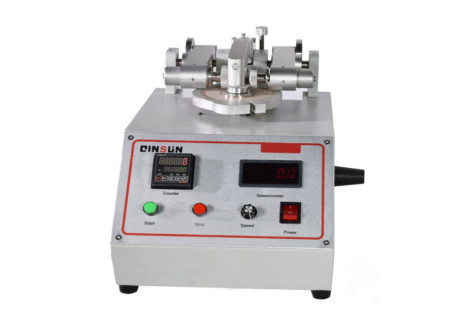
NewsInformation Center
What is the measure of how easily a material can be scratched?
2023/08/03
The ease of scratching of a material is one of the important indicators of its durability and service life. In industrial and consumer product manufacturing, several test methods are commonly used to measure the scratch resistance of materials. This article describes these test methods and the factors that affect how easily a material will scratch.

Commonly used test methods
Currently, commonly used testing methods include:
1. Taber Abrasion Test: The Taber Abrasion Test is a common method used to evaluate the abrasion resistance of various materials such as coatings, plastics, textiles, etc. This test method involves rubbing a rotating abrasive wheel against a material surface and measuring the amount of material removed or the change in surface appearance. In the Taber wear test, high hardness abrasive wheels such as H-18, CS-10F and S-42 are usually used.

2. ASTM D5178 Standard Test Method: ASTM D5178 standard test method is used to evaluate the scratch resistance of organic coatings such as paints, varnishes and varnishes. This test method involves scratching the surface of a coated sample with a pen tip of increasing hardness ranging from 2B to 9H on the pen hardness scale, and then determining its scratch resistance by visual inspection of the depth and width of the scratch.
Factors Affecting Ease of Scratching
The ease with which a material scratches is influenced by the following factors:
1. Material hardness: In general, materials with higher hardness are more difficult to be scratched, such as steel, ceramics and other materials.
2. Material toughness: The toughness of a material indicates its ability to resist fracture. A material with high toughness can disperse the scratching force and reduce the formation of scratches.
3. Surface coating: The surface coating can improve the scratch resistance of the material, such as the use of wear-resistant coatings or treatments that increase surface hardness.
4. Scratch tools: Scratching with tools of different materials can produce scratches of different degrees, such as using pen tips with different hardness.
Summarize
The ease of scratching of a material is one of the important indicators of its durability and service life. Test methods for assessing the susceptibility of materials to scratch include the Taber Abrasion Test and the ASTM D5178 standard test method. These test methods can be used to compare scratch resistance between different materials or coatings and provide guidance for manufacturers to improve their products. Factors that affect the ease of scratching include material hardness, toughness, surface coating, and scratching tools.
Previous: What is the ASTM standard for scratch testing?
N e x t : What factors affect how easy it is to scratch a material?



